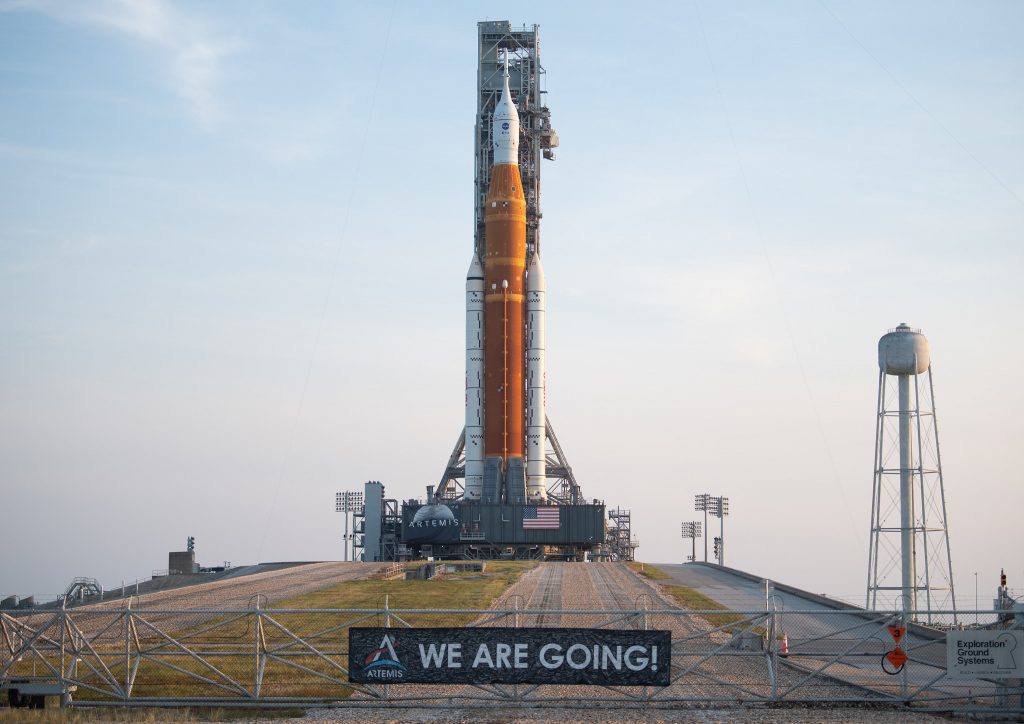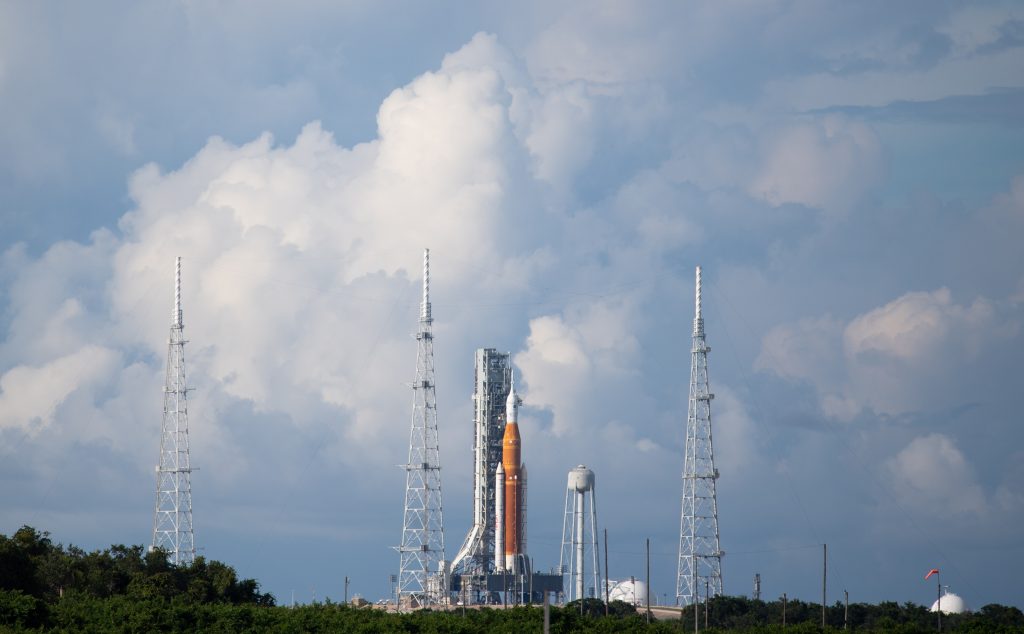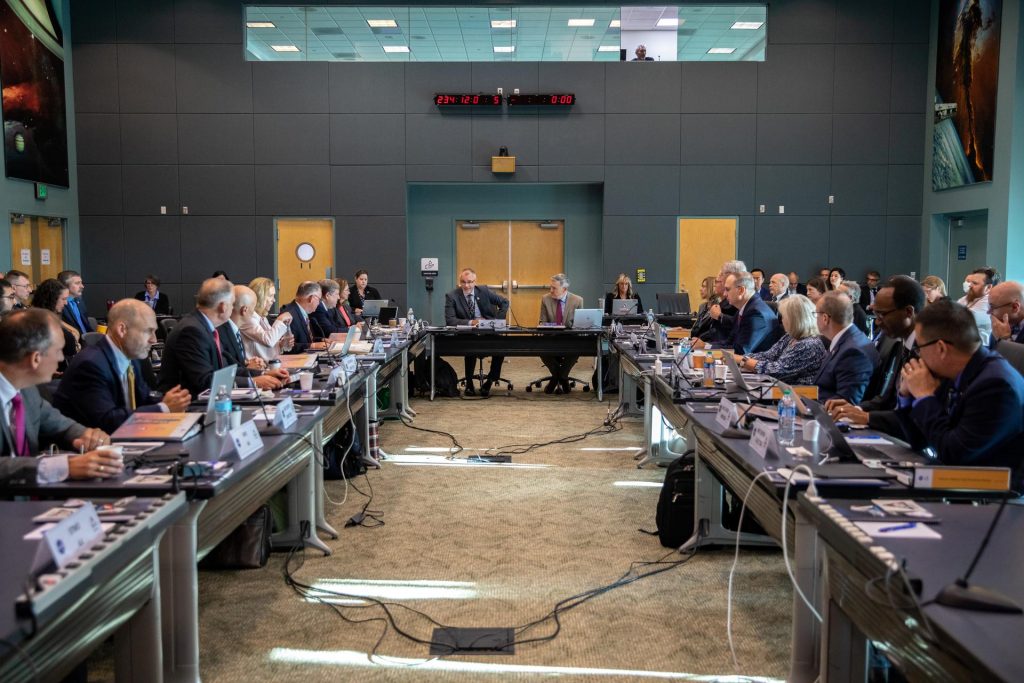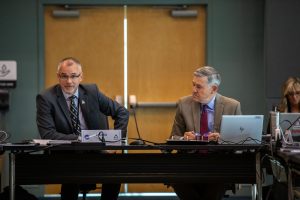The Artemis I Mission Management Team has given the “go” to proceed toward tanking operations.
Weather conditions remain 80% favorable at the beginning of the two-hour launch window which opens at 8:33 a.m. EDT Aug. 29, with chances for rain showers increasing toward the later part of the window.
Artemis I launch director Charlie Blackwell-Thompson is scheduled to give the “go” to officially begin propellant loading operations just before midnight.
During tanking operations, teams will fuel the Space Launch System (SLS) rocket with liquid oxygen (LOX) and liquid hydrogen (LH2), beginning with the rocket’s core stage and then the interim cryogenic propulsion stage.
Tanking begins with chilling down the LOX lines for the core stage. The process for the chill down, or cooling, uses the propellant lines to load the rocket’s core stage LOX in preparation for tanking. The LOX tank holds 196,000 gallons of liquid oxygen, cooled to minus 297 degrees Fahrenheit. In sequential fashion, LOX and LH2 will flow into the rocket’s core stage tank and be topped off and replenished as some of the cryogenic propellant boils off.
The process involves slowly filling the core stage with propellant to thermally condition the tank until temperature and pressure are stable before beginning fast fill operations, which is when the tank is filled at a quicker pump speed. As the super cold liquid oxygen fills the core stage tank, some venting may be visible. The team also will conduct leak checks to ensure propellant loading is proceeding as expected.
At midnight, NASA TV coverage begins with commentary of tanking operations to load propellant into the SLS rocket. Full coverage begins at 6:30 a.m. in English and at 7:30, coverage in Spanish begins.
Below are the countdown milestones as planned for tanking:
- Core Stage LO2 transfer line chilldown (L-8H15M – L-8H)
- Core stage LO2 main propulsion system (MPS) chilldown (L-8H – L-7H20M)
- Core stage LO2 slow fill (L-7H20M – L-7H5M)
- Core Stage LO2 fast fill (L-7H5M – L-4H15M)
- Core Stage LH2 chilldown (L-7H15M – L-7H5M)
- Core Stage LH2 slow fill start (L-7H5M – L-6H15M)
- Core Stage LH2 fast fill (L-6H15M – L-5H5M)
- Core Stage LH2 topping (L-5H5M – L-5H)
L-5 hours and counting
- Core Stage LH2 replenish (L-5H – Launch)
- ICPS LH2 ground support equipment (GSE) and tank chilldown (L-4H45M – L-4H30M)
- ICPS LH2 fast fill start (L-4H30M – L-3H30M)
- Orion communications system activated (RF to Mission Control) (L-4H20M – L-3H45M)
- Core stage LO2 topping (L-4H15M– L-3H55M)
- Core Stage LO2 replenish (L-3H55M – Launch)
- ICPS L02 MPS chilldown (L-3H55M– L-3H45M)
- ICPS L02 fast fill (L-3H45M– L-2H55M)
- ICPS LH2 validation and leak test (L-3H30M – L-3H15M)
- ICPS LH2 tank topping start (L-3H15M – L-2H55M)
L-3 hours and counting
- ICPS/Space Launch System (SLS) telemetry data verified with Mission Control and SLS Engineering Support Center (L-2H55M – L-2H45M)
- ICPS LO2 validation and leak test (L-2H55M – L-2H30M)
- ICPS LH2 replenish (L-2H50M – Launch)
- ICPS LO2 topping (L-2H30M – L-2H10M)
- ICPS LO2 replenish (L-2H10M – Launch)




